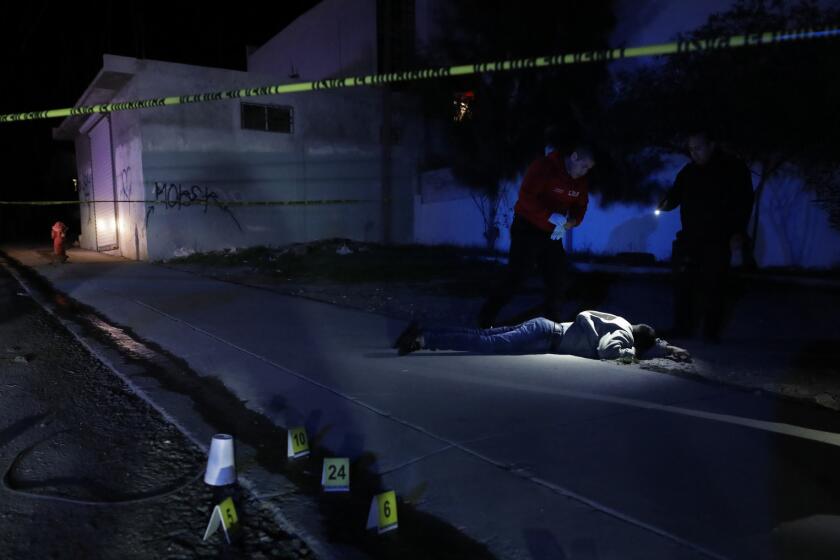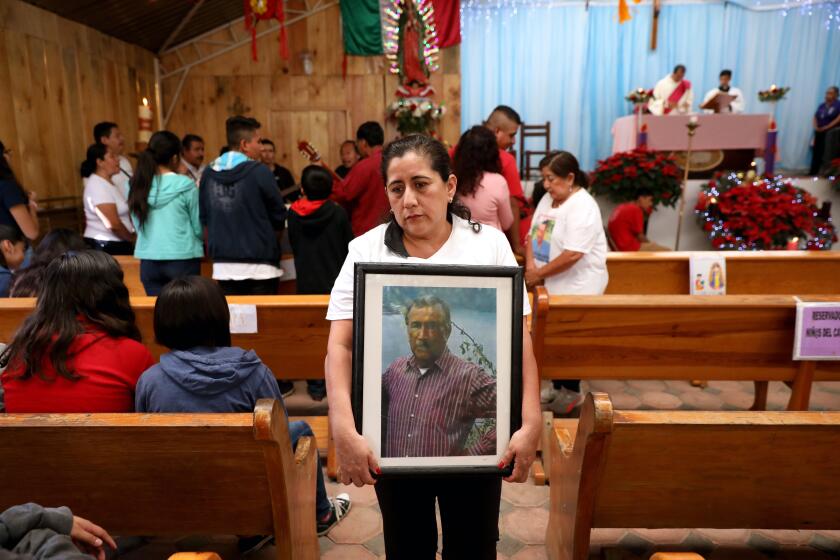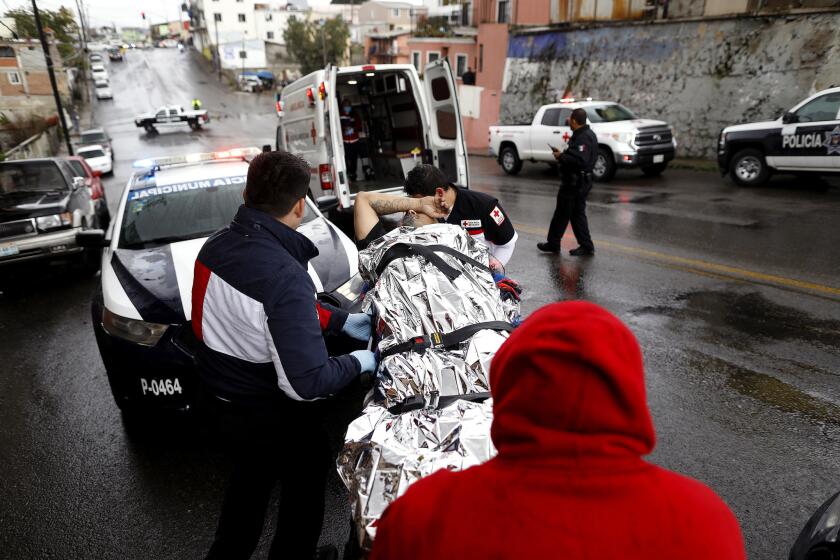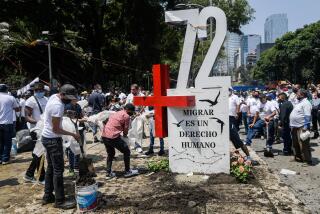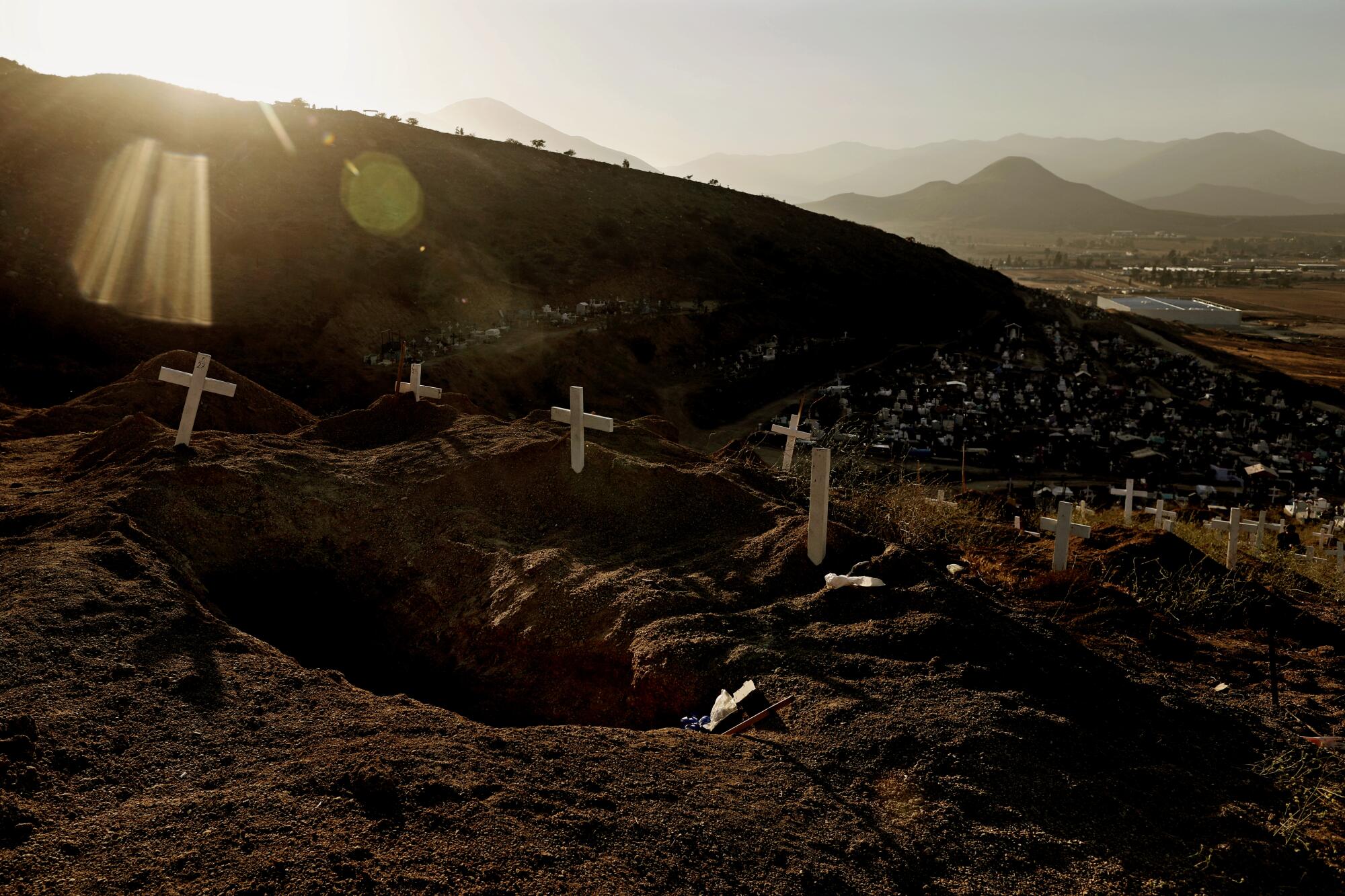
- Share via
TIJUANA — After hearing that her 44-year-old son had been murdered in downtown Tijuana, Guadalupe Aragón Sosa went searching for him.
She gave police a sample of her DNA, but they said they found no hits when they checked it against a database of unidentified bodies.
She spent hours at the local morgue, flipping through black-and-white photographs of unclaimed corpses, but her Carlos was not among them.
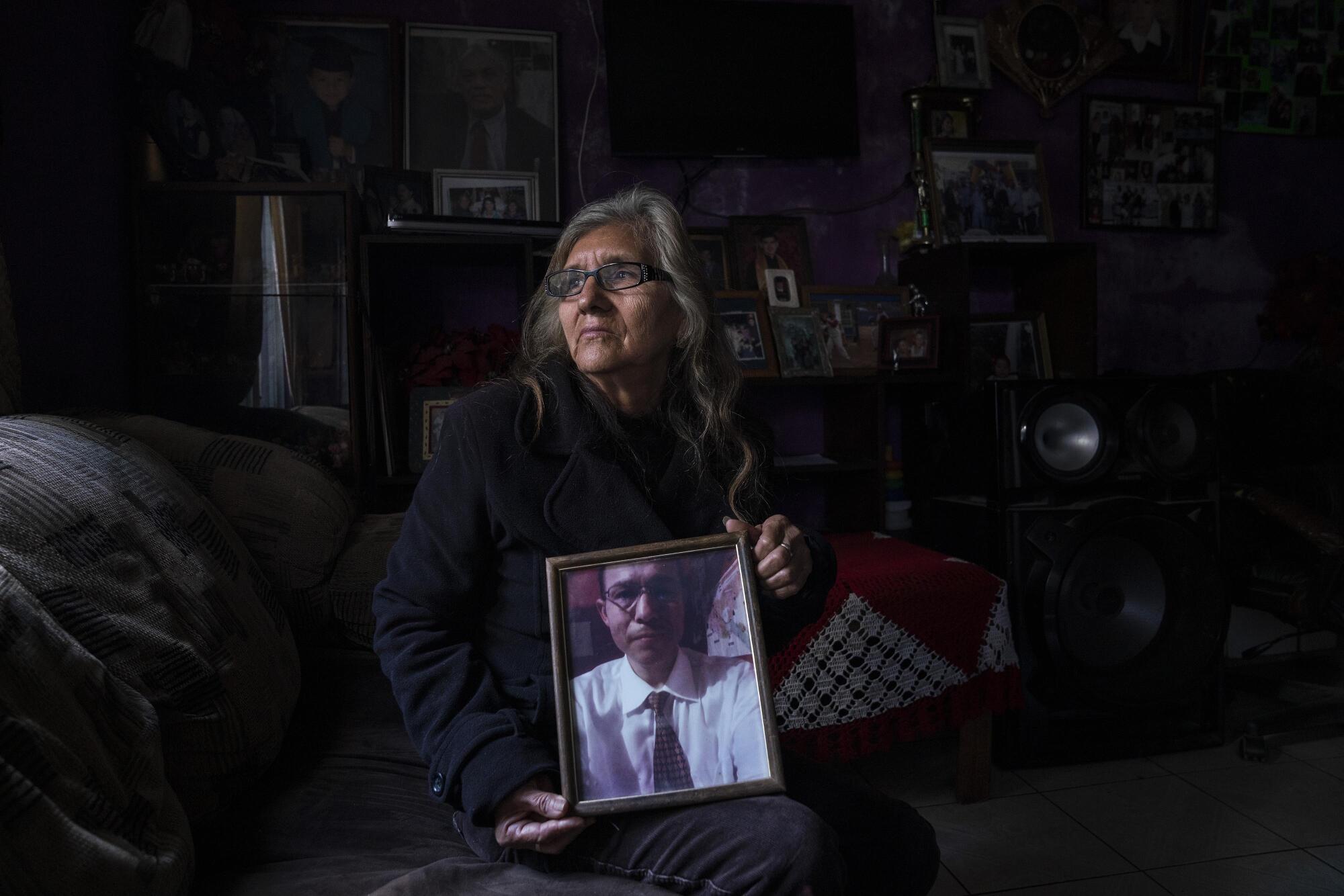
She scoured fields and garbage dumps on the outskirts of town where local thugs were known to bury their victims, probing the soil with a metal rod in search of a whiff of decaying flesh. She unearthed about a dozen cadavers, but not her son.
Nearly a year passed before she finally learned his fate in late 2018: He had been in a government grave all along.
Some 80,000 Mexicans have disappeared in the last 15 years and never been found. Many are now thought to be in government custody — among the thousands of corpses that pass through morgues each year without ever being identified and end up in common graves.
The country’s top human rights official, Alejandro Encinas, has called the problem a “humanitarian crisis and forensic emergency.”
“For years, the state abdicated its responsibility, not only to guarantee the safety of the people, but to give ... families the right to search and find and return home with their relatives,” he said last year.
A recent investigation by the news team Quinto Elemento Lab revealed through public records requests that there are nearly 39,000 unidentified bodies dating back to 2006 in government custody.
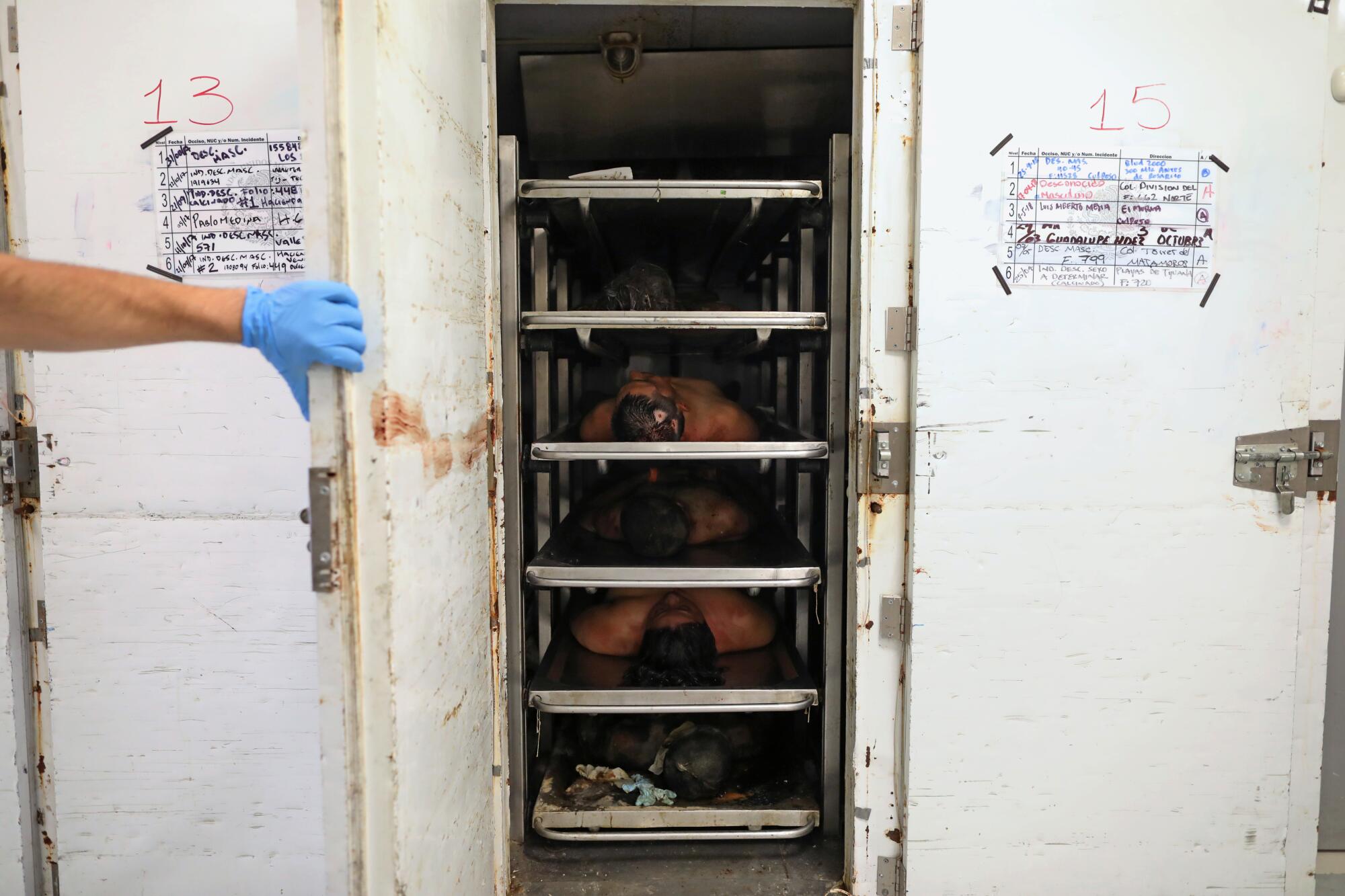
More than 28,000 of them had been cremated or buried in public cemeteries. Another 2,589 had been donated to medical schools. Most of the rest were still in morgues or could not be located.
Government officials won praise from human rights advocates when they announced a plan in late 2019 to assemble a team of national and international experts with the aim of identifying all the bodies and even bone fragments.
But the effort has stalled amid the COVID-19 pandemic and the realization that the forensic challenges are more daunting than anticipated.
“Few cemeteries — almost none — have a good registry of the location and quantity of people who are buried there,” said Roxana Enríquez Farias, a founder of the Mexican Forensic Anthropology Team, a nonprofit that has aided with state-level exhumation plans.
Decomposing corpses are frequently stacked one on top of another, sometimes only in plastic bags, and the mixing of genetic materials makes it difficult to obtain useful samples.
“If you’re looking for a 17-year-old girl, you’ll end up with a match for a 43-year-old woman,” said Yanet Juarez, a researcher at the National School of Anthropology and History.
In many cases, records of the disappeared consist of nothing more than names and ages, without family DNA samples or other clues that could help match them to remains. When the state of Tamaulipas exhumed 265 cadavers and various boxes of bones from a public cemetery in 2018, officials were able to identify only about 30 people.
Finding the body of a missing relative often comes down to a combination of luck and persistence.
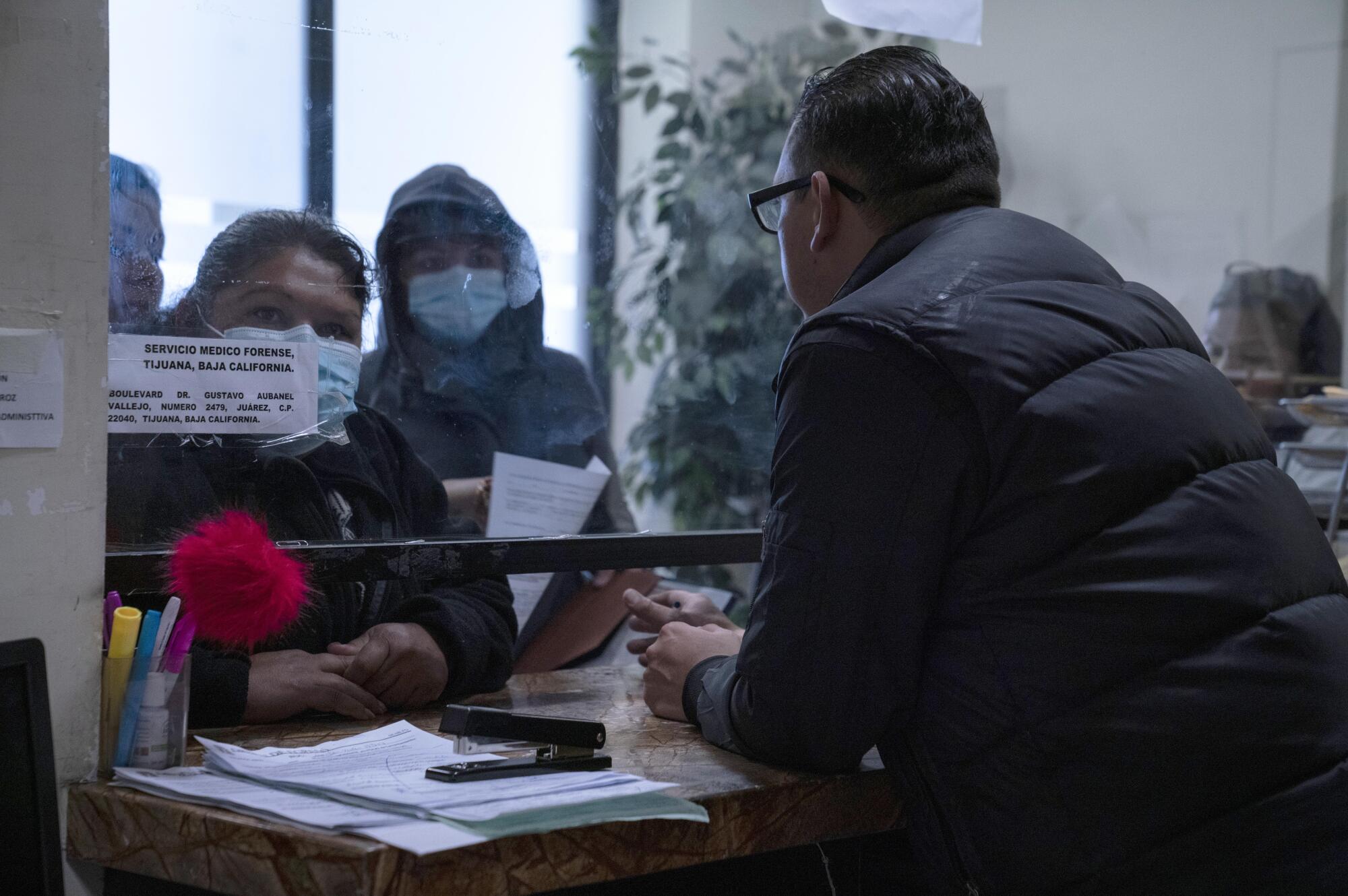
“The first time I went to the morgue, they told me that there were no unidentified bodies, only one boy who had already been identified,” said Gladys Quiroz Longoria, who remembered exactly what her 27-year-old son had been wearing the day he went missing and described the clothes to authorities.
“They always told me there was nothing there … until the day they called to show me photos.”
Her son, Eugenio Alexander Molina Quiroz, had been at the Tamaulipas morgue for the last eight months.
In theory, every time a new body arrives at a morgue it is supposed to be refrigerated until it can be autopsied and inventoried for scars, tattoos, cavities and other characteristics that could aid in identification. DNA samples are supposed to be stored in case they’re needed later.
But in practice, many medical examiners simply can’t keep up with the body count.
The problem made headlines in 2018, when medical examiners in Jalisco state ran out of space and stuck more than 300 unidentified corpses in two tractor trailers that circled the suburbs of Guadalajara until residents complained of the smell.
A similar scandal erupted that year in Tijuana, where the morgue was so jammed that officials started wedging multiple bodies into each narrow refrigeration space and stacking corpses on the floor when storage units required cleaning.
In a single day, three dozen bodies might arrive, nearly all of them gunshot victims. The morgue’s record for the most autopsies performed in a single day was 28, but its chief medical examiner at the time said it was really only staffed to perform about 10.
“We’re living in a civil war,” the medical examiner, Jesús Ramón Escajadillo, said in an interview that May.
The problem persists. Of the 4,132 bodies that entered Tijuana’s morgue last year, a quarter — 1,042 — ended up in government graves, nearly all without being identified.
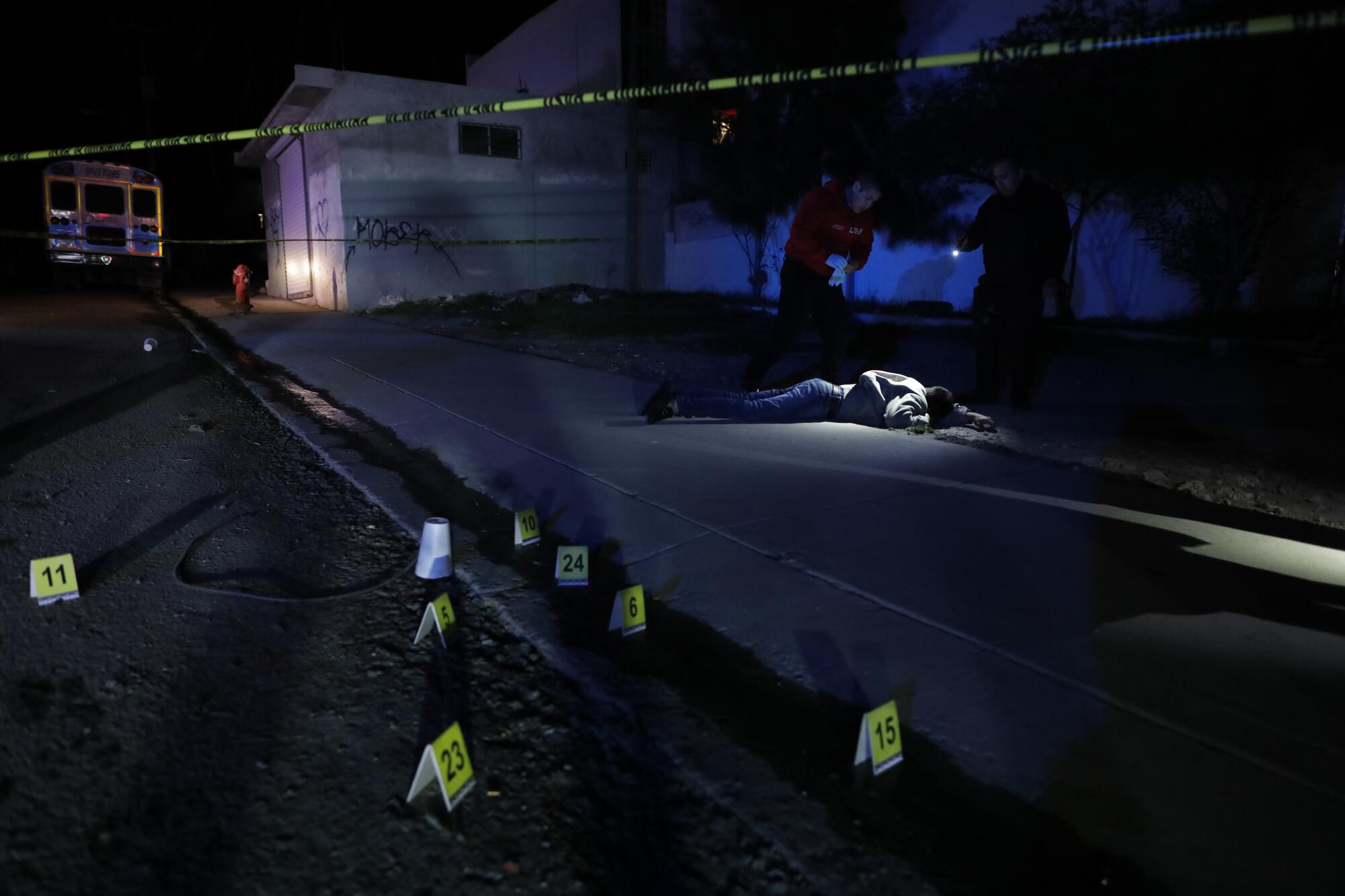
The violence gripping Mexico started about 15 years ago, when the government unleashed soldiers onto the streets to battle drug cartels. The last several years have been the bloodiest yet, with a record 34,648 homicides recorded in 2019 and 34,515 last year.
At the same time, the ranks of the disappeared continue to grow, with nearly 7,000 people reported missing last year.
The issue drew international attention after the 2014 disappearance of 43 students from a teachers college in Guerrero state, possibly after they happened upon a drug-trafficking operation.
The case spurred massive street protests and drew visibility to other families with missing loved ones, many of whom had formed local collectives to search and dig for remains on their own.
Under increasing public pressure, the government of then-President Enrique Peña Nieto passed the General Law on Forced Disappearances, which ordered the creation of federal and state search commissions and a series of databases that would help match unidentified human remains and people registered as missing.
Mexican President Andrés Manuel López Obrador, who won election in a landslide in 2018 in part by vowing to reduce the country’s violence and listen to its victims, met with families of the disappeared and pledged to help them.
By last year, search commissions had been established in every state and the government had opened its first Regional Center for Human Identification, in the northern state of Coahuila.
But Encinas, Mexico’s undersecretary of human rights, has acknowledged that progress is likely to be slow.
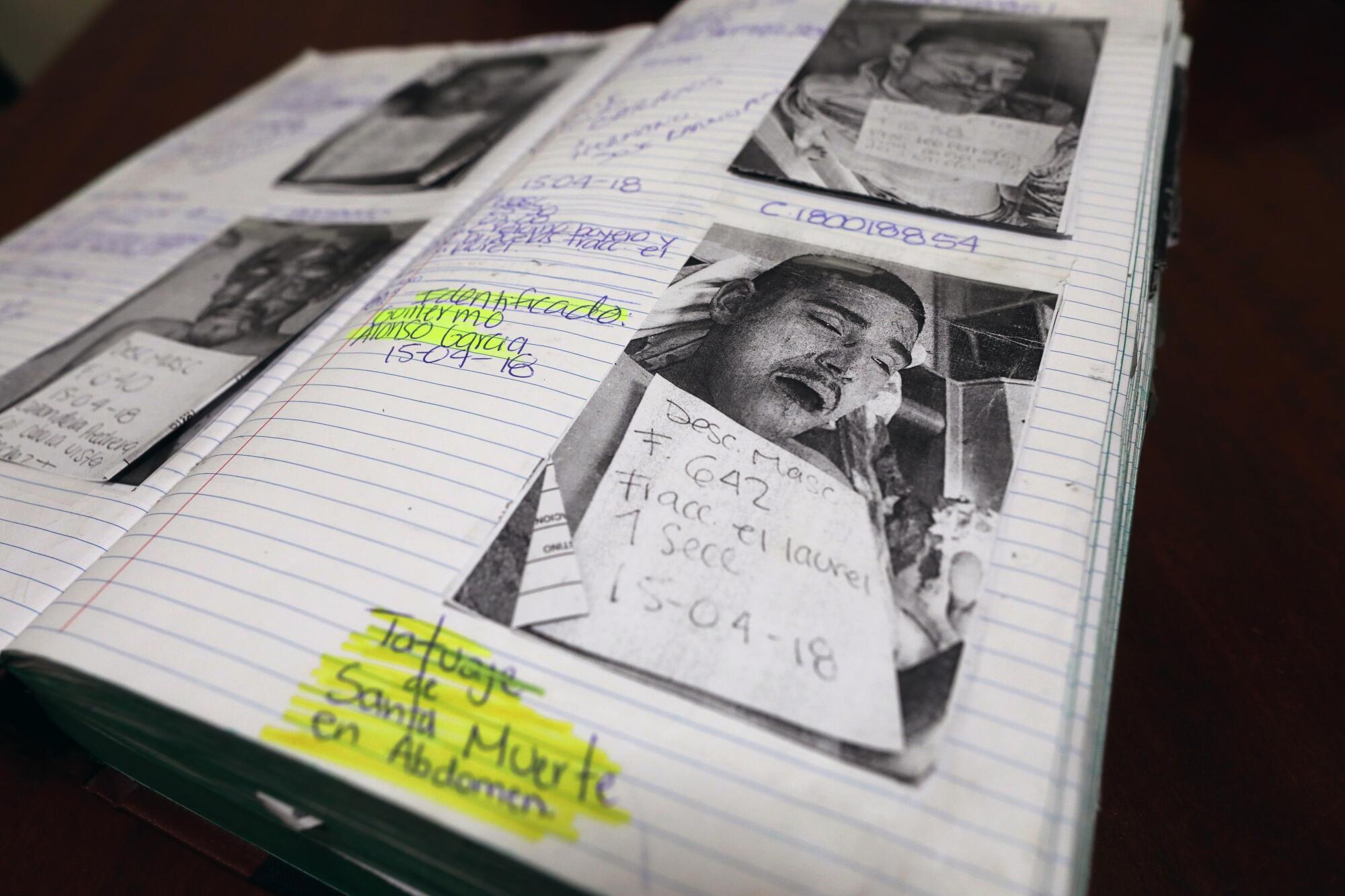
In some cases, local governments intentionally kept bad records to help cover up crimes, burying corpses that they had not even examined, neglecting to assign them identification numbers, and deliberately excluding them from official counts of bodies in custody.
“We’ve tried to collect clear information so we can leave behind the ruses and trickery in cases of forced disappearances that allowed past authorities to ignore and avoid the scale of the problem,” Encinas said last year. “The fact is, the data is devastating.”
The latest setback has been COVID-19, which has officially killed nearly 200,000 people in Mexico.
“The expectation, generally, was that the subject of disappearance and of identifications would be one of the top priorities of the federal government,” said Humberto Guerrero Rosales, a member of a citizens advisory board on the issue formed in 2018. “But then came a global pandemic.”
Meanwhile, many families continue to search on their own.
After weeks of scouring fields for her son, Aragón went to the federal government.
In 2018, at a public event in Tijuana, she cornered the man who would soon be named the nation’s top public security official by López Obrador. The next day, someone from the state prosecutor’s office called, telling her he was on the case.
Within a few days, investigators said there was a possible genetic match. Then they showed her photographs that had been taken of her son’s body at the crime scene. They explained that he had died from blows to the head and chest and that he had been buried soon after his autopsy.
That December, she paid a funeral home nearly $1,600 to exhume his body from the government cemetery.
As a gravedigger removed bags containing the remains of the 13 people who were buried on top of her son, she thought about the other families she knew who were searching for their own loved ones.
“I realized every bag was another person,” she said.
She buried Carlos next to his father, knowing that she may never know for sure who killed him or why.
A few months later, she returned to the fields surrounding Tijuana. She wanted to help other families find their children, too.
Averbuch is a special correspondent. Linthicum is a staff writer. This story was reported in part with the support of the International Women’s Media Foundation.
More to Read
Sign up for Essential California
The most important California stories and recommendations in your inbox every morning.
You may occasionally receive promotional content from the Los Angeles Times.
